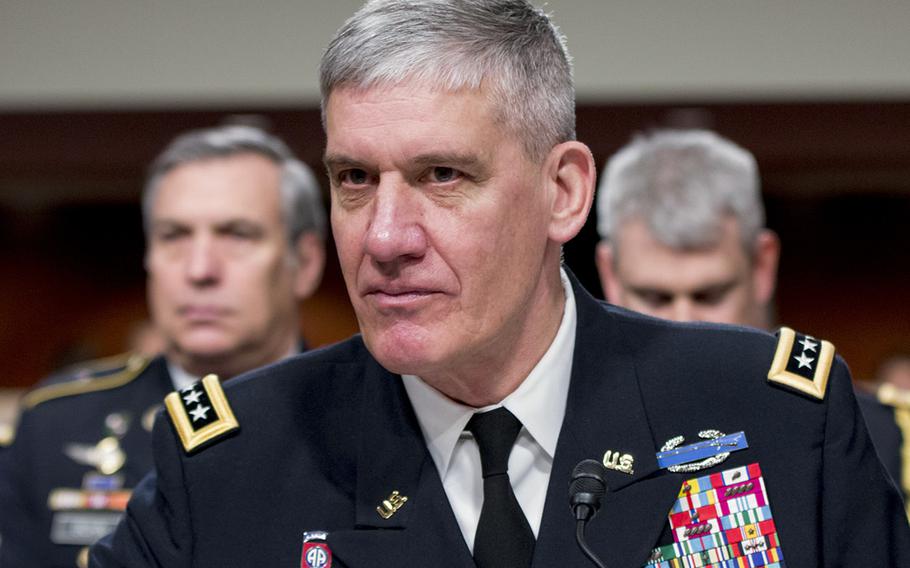
In a March 8, 2016 file photo, Gen. David Rodriguez testifies on Capitol Hill. (Rick Vasquez/Stars and Stripes)
The number of Islamic State fighters in Libya has doubled during the past year, but local militias and government forces are limiting the group’s territorial expansion, the head of U.S. Africa Command said Thursday.
“They are contesting the growth of ISIS in several areas,” Gen. David Rodriguez told reporters at a Pentagon news conference, using an acronym for the Islamic State group. “It is uneven and it is not consistent across the board.”
Rodriguez, who is nearing the end of his tenure at the helm of AFRICOM, said the number of Islamic State militants in Libya now ranges between 4,000 and 6,000. The fighters are mainly centered around the coastal stronghold of Sirte.
However, in eastern Libya and several other areas of the country, the militants have struggled to gain a strong foothold due to local resistance, Rodriguez said. However, infighting among various militias and government forces prevents them from launching a unified offensive against the Islamic State.
“The challenge they have is that in addition to (fighting the Islamic State) they sometimes fight amongst themselves,” Rodriguez said.
Instability in Libya and concerns about the growth of the Islamic State group have led the U.S. to launch periodic airstrikes to take out senior leaders and fighters in the country. For now, there are no immediate plans to launch a more expansive military campaign, Rodriguez said.
Over the past year, the Islamic State has sought to expand past its heartland in Syria and Iraq by setting up affiliates in Libya, Afghanistan and Yemen.
A prerequisite for deeper U.S. involvement in Libya is a cohesive government on the ground that the U.S. could partner with, Rodriguez said.
At the moment, the country most directly threatened by the Islamic State is Libya’s western neighbor, Tunisia, Rodriguez said, adding that the group’s ambitions for targeting Europe and the U.S. remain “aspirational.”
Since U.S.-led airstrikes four years ago helped to topple the regime of Moammar Gadhafi, who was captured and slain by rebels, Libya has been embroiled in factional fighting.
While the Islamic State group has taken advantage of the chaos, Rodriguez said he doesn’t foresee the militants seizing swaths of Libyan territory in the same way they have in Syria and Iraq since 2014.
“They (Libyan forces) are stopping ISIS from growing and [are] doing that the best they can,” Rodriguez said.
Unlike in Iraq and Syria, the Islamic State militants in Libya don’t have the same “home-grown people that know as much about Libya.”
For now, the main U.S. military focus is on targeting Islamic State elements in Libya that pose a direct threat to U.S. interests, he said.
“The effort right now continues to remain on the imminent threats to U.S. personnel,” Rodriguez said. “That is the No. 1 concern for us right now”